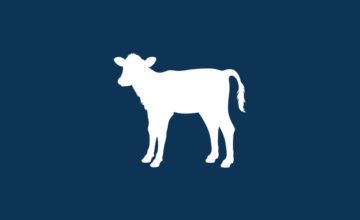5 C’s Of Calf Care
- Aug 12, 2016
- By Grober Nutrition
- In Canada, USA
Every producer has individual opportunities and challenges due to their housing environment and management strategy. The key to maximizing growth, health, and long-term profitability is establishing a sound system of care for your pre-ruminant livestock. No matter the system you choose, ensuring these 5 keys to management are acknowledged and defined for you and your team will enhance the performance of your young stock.
Here are the 5 keys to success in young animal nutrition
Colostrum: Proven to be the key to young animal health and vitality, ensuring that newborns receive a high quality colostrum in the right concentrations is an investment into a successful and profitable rearing program. Ensure that calves receive a high quality colostrum within 6 hours of birth. Utilizing Calf’s Choice Total™ colostrum replacer and Grober Lamb/ Kid Colostrum replacer ensures that the correct quantity of total protein and nutrients are delivered to the newborn, guaranteeing broad-spectrum immunity and cleanliness, as well as being a time efficient management strategy.
Calories: A young animals energy needs are based on the environment and their genetic potential for growth. The pre-ruminant phase of growth, which occurs between 0-3 weeks of age, is the most efficient stage of growth. Maximize their growth during this phase by ensuring your milk replacer is meeting their dietary requirements, is highly consistent, and has the highest quality digestible ingredients to maximize the efficiency of your feeding program. Any abnormal events (illness, dehorning, vaccination etc) should be followed up with a greater volume of milk replacer at the next meal – calves will burn more energy when stressed. Sucking will help calm calves and nutrition will help replenish energy reserves. A gradual 2 week weaning program, which can begin between 6- 8 weeks of age, will allow for optimal rumen development through fresh water and calf starter uptake. New research from Italy has shown positive results by providing free choice chopped straw, which allows for scratch factor and increased digestive muscle development.
Consistency: From the quality of your milk replacer to feeding times, mixing concentration and temperature will influence how well your young animals perform. Ensure that you and those responsible for your young stock value the importance of maintaining consistency. Enforce feeding times, weigh your milk replacer for the correct concentration, and follow the mixing instructions for temperature and concentration. Digital scales are the most accurate for measuring your milk replacer. Ensure that the milk replacer is delivered at a temperature between 38-42˚C for optimal palatability and digestion.
Cleanliness: The transfer of disease and bacteria can cause high infection rates and high pre-weaning mortality in your animals. A clean calving area with thick bedding and immediate calf separation upon birth will prevent a newborn’s exposure to manure, thus preventing Johne’s Disease and Leukosis infection, as well as preventing Salmonella, E.Coli, and Leptospirosis infection. Ensure that colostrum is collected and delivered in a highly sanitary manner- any bacterial infection through poor sanitary practices to a newborn can be fatal or impair their lifetime performance. Wash your calf feeding utensils in a similar fashion to your wash cycle, utilizing acid, hot water, and a cool water- detergent rinse. In group housing, cross-sucking may cause navel infections and promote spread of disease and bacteria. Ensure that young animals’ needs for milk replacer are being satisfied, and ensure a gradual weaning program will do significant work to reduce cross sucking.
Comfort: A draft-free, and well ventilated environment is the first step to young animal comfort. Preventing rapid temperature fluctuations will allow young animals to maintain consistency and health. Providing deep bedding will allow young animals to better regulate their body temperature and maintain warm, thus reducing their energy maintenance requirements, and allowing these nutrients to contribute to growth. Group housing can help maximize comfort by allowing socialization, allow for more space/ calf, and greatly aid in weaning growth and progression, as the positive interaction between animals promotes grain and water intake.
Grober Nutrition
Recent Posts
Tags
Archives
- October 2024
- July 2024
- May 2024
- April 2024
- January 2024
- December 2023
- October 2023
- September 2023
- August 2023
- June 2023
- December 2022
- November 2022
- October 2022
- August 2022
- July 2022
- June 2022
- May 2022
- April 2022
- March 2022
- February 2022
- January 2022
- August 2021
- February 2021
- September 2020
- June 2020
- April 2020
- May 2017
- April 2017
- October 2016
- September 2016
- August 2016
- March 2016
- March 2015
- January 2015
- December 2014
- December 2013
- September 2013
- May 2013
- January 2013
- December 2012
- November 2012
- March 2012
- March 2011
- February 2011
- November 2010
- August 2010
- December 2009
- November 2009
- March 2009















